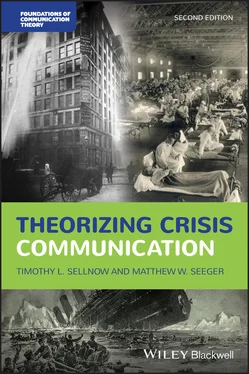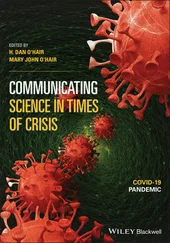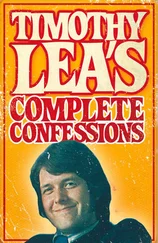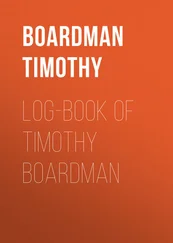Stage IV is the response stage, when the intended audience takes some action as a response to the recall message. These actions vary depending on the nature of the event, the interpretation of the message, and the recommendations. Possible actions include disposing of or returning the unsafe product, seeking medical attention, or simply avoiding the unsafe item. One important factor for consumer compliance may be the ease of the recommended action and the ability to do what is suggested. Some consumers may find it easy to dispose of the product, while others may see disposal as a significant economic burden. For example, some consumers may be able to readily purchase alternative food items. Others may not have the ability simply to dispose of a food item.
Applications of the Integrated Model of Food Recall
Although the food recall model describes communication and decisional processes within a very common risk context, it has not yet been applied broadly. One exception is Novak and Biskup’s (2011) examination of readability in food-related warning and recall messages produced by the Food and Drug Administration and the United States Department of Agriculture. The authors concluded that food-related warnings and recalls were written at reading levels above those of nearly half of the adult U.S. population. Messages at this level exclude a significant portion of the public from understanding and believing the messages as described in Stage III of the model. The high reading levels of these written warnings and alerts about food contamination limit their effectiveness.
Strengths and Weaknesses of the Integrated Model of Food Recall
The model as currently constituted is limited in its scope to recall and warning messages related to food in contexts where the agencies and processes of recalls and warning are generally well defined. In other contexts, variables and processes may be much more equivocal. The scope of the warning, those who issue the warning, and the desired actions in many cases are not predetermined. In addition, this form of warning message typically does not include the same level of urgency and time sensitivity that might be associated with other warning contexts, such as major weather events or chemical or radiological spills.
The integrated food recall model includes various feedback loops representing information seeking, expanded recalls, and evaluation of the effectiveness of the recall. These loops, as well as the specific elements and dynamics of the recall process, describe places in the process where decisional points or information may require the repetition of earlier stages or processes. In this way, the model seeks to capture a more dynamic notion of the communication elements of the recall, including the fact that the audience/consumer is an active participant in the warning process. Like the PADM, the food recall model integrates communication and decisional systems to create a much more complex and complete understanding of these processes.
Technology has created new opportunities for communication, and these systems have also created new forms of warnings. Text-based alert systems, such as WEAs, emerged within defined communities and audiences as a way to quickly deliver specific information to limited audiences, including schools and businesses. Colleges and universities widely embraced these warning systems after several prominent incidents involving shootings on college campuses, including the April 16, 2007, Virginia Tech shootings and the shootings at Northern Illinois University on February 14, 2008. These systems allow for nearly real-time messages about specific threats to be delivered to handheld devices of users who have opted into the service (Wood et al., 2018). Systems also have been developed for metropolitan areas including New York City and Washington, DC. Many of these text alert systems place significant levels of control in the hands of receivers to tailor the warning messages to specific threats. As technology continues to improve, these systems will create more flexibility and more choices. Handheld device technology has also led to the development of the Commercial Mobile Alert System (CMAS). The CMAS was established by the Federal Communications Commission following the passing of the Warning, Alert, and Response Network (WARN) in 2006. WARN called for the use of multiple technologies including new media technologies to increase the effectiveness and reach of alerts and warning (NRC, 2011). The WARN system includes presidential alerts, imminent threat alerts, and child abduction alerts (AMBER alerts) (NRC, 2011). Another system, Personal Localized Alerting Network (PLAN), will allow users to localize their alerts to specific geographically targeted areas. In 2011, FEMA began authorizing use of WEAs distributed through cell phones and other mobile devices. WEAs are 90-character, geo-targeted emergency messages distributed through telecommunications networks (Bean et al., 2015).
These and other systems reflect efforts to use the considerable advances in digital technology to target and tailor warning messages and by doing so improve the effectiveness of the message. They are not, however, without significant limitations. WEAs, CMAs, Tweets, and similar text alert systems are limited in the amount of information that can be carried. WEAs, for example, are limited to 90 characters. Sutton and colleagues (2015) have described these as terse messaging systems and noted that while they are limited in the amount of information that can be communicated, they are likely to be retransmitted, which may enhance the reach of warning messages.
We describe the role of new media technologies within crisis communication in Chapter 8. Although these technologies are relatively new tools for issuing warning messages, researchers have begun to develop and apply theory in their efforts to understand how these systems operate. This includes application of the concept of milling and Emergent Norm Theory (Wood et al., 2018), uses and gratification theory and message tailoring (Park & Avery, 2018), and the Crisis and Emergency Risk Communication framework (Meadows et al., 2019). Milling has been documented as a common behavior when individuals face an unfamiliar and unstructured situation, such as a crisis, and is a way to construct a socially sanctioned meaning. Wood et al. (2018) argue that Emergent Norm Theory “would go on to predict, therefore, that a protective action warning response would follow from whatever new socially constructed definitions might result from milling” (p. 538). Uses and gratification theory has been employed to describe the ways individuals engage with new media sources during a crisis and allows for messages to be tailored to meet needs (Day et al., 2019). Crisis and Emergency Risk Communication, described in Chapter 6, is a very general framework that has been extended to social media including to the communication in false warning messages (Murthy et al., 2019). Given its advantages in timeliness, social media is likely to become an increasingly important method for disseminating warning messages, although legacy media will continue to continue to play an important role. The development of specialized theories of social media and warnings is still in its infancy.
The warning process is both a communication process and a decisional process. It involves disseminating information in a way that promotes specific choices and associated behaviors – for example, to dispose of a product, evacuate, shelter in place, boil water, and so on. These actions usually involve non-routine behaviors, such as leaving one’s home or community and incurring costs, such as disruptions to work or disposal of contaminated food. Theories of warning have sought to understand the communicative and decisional elements in part by understanding both the informational exchange elements and the persuasive elements. The social dimensions of warning, as well as preexisting beliefs and perceptions, have been incorporated into several models. Increasingly, efforts have been made to understand warnings as complex and dynamic processes involving feedback loops and classes of demographic, social, psychological, and communicative variables.
Читать дальше












